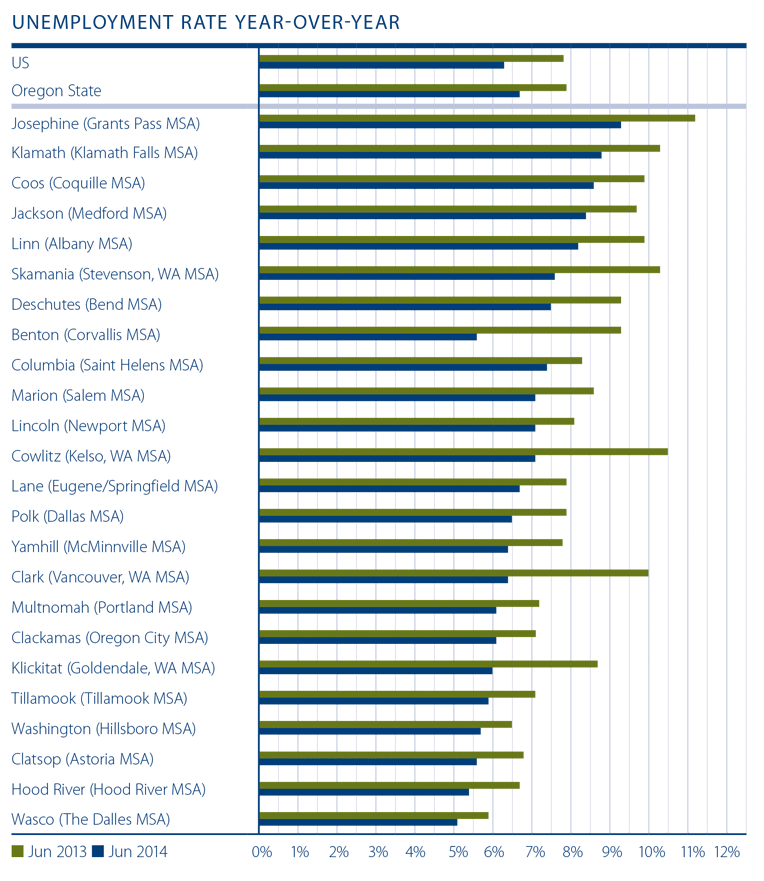Windermere Real Estate is proud to partner with Gardner Economics on this analysis of the Oregon and Southwest Washington real estate market. This report is designed to offer insight into the realities of the housing market. Numbers alone do not always give an accurate picture of local economic conditions; therefore our goal is to provide an explanation of what the statistics mean and how they impact the Oregon and Southwest Washington housing economy. We hope that this information may assist you with making an informed real estate decision. For further information about the real estate market in your area, please contact your Windermere agent.
Regional Economics
Oregon job growth in the areas contained in this report slowed a little in the second quarter with the addition of 31,509 jobs, or an increase of 1.8%. That said, during the quarter, employment rose by 17,508 jobs (+1%) which is still not a bad figure.
When compared to the second quarter of 2013, growth was strongest in Klamath County, where employment grew by 4.9 percent (1,090 jobs). This was followed by Clark (+4.2%) and Deschutes (+3%) Counties.
Job losses were somewhat more widespread than those seen a year ago; however, the total losses amounted to only 1,030 positions. The largest declines were seen in the Medford market where there was a loss of 630 jobs.
At the end of 2013, I suggested that the region should add 35,000 jobs in 2014 and we appear to still be pretty much on track to achieve that figure.
In line with our last report, the unemployment rate continues to drop and now every county in the region has an unemployment rate below that seen a year ago. Additionally, the rate is also lower than seen at the end of the first quarter, which suggests that the market is improving in both the near- and longer-term.
It is also worth noting that all of the counties within this report can now say that their unemployment rate is below ten percent. This is a key psychological barrier and, as regular readers will be aware, I had worried that many counties appeared to be stuck above this threshold. This is now no longer the case.
If there is something that still concerns me it is that the state, after adding close to 44,000 jobs in 11-straight months of growth, saw payroll employment shrink by 4,300 jobs in June. And what’s even more disconcerting is that the construction industry dropped by 3,600 jobs at a time when, traditionally, employment should be growing.
Could this just be an anomaly? Maybe! However, because of this, I cannot raise my grade for the region’s economy above the “C+” that I gave it last quarter.
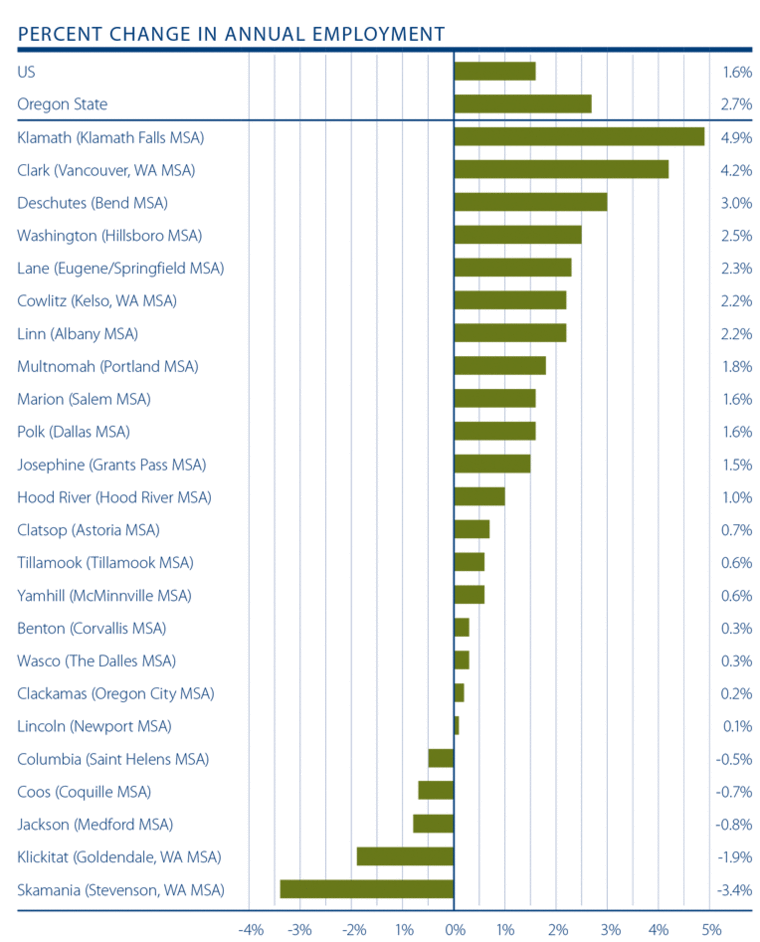

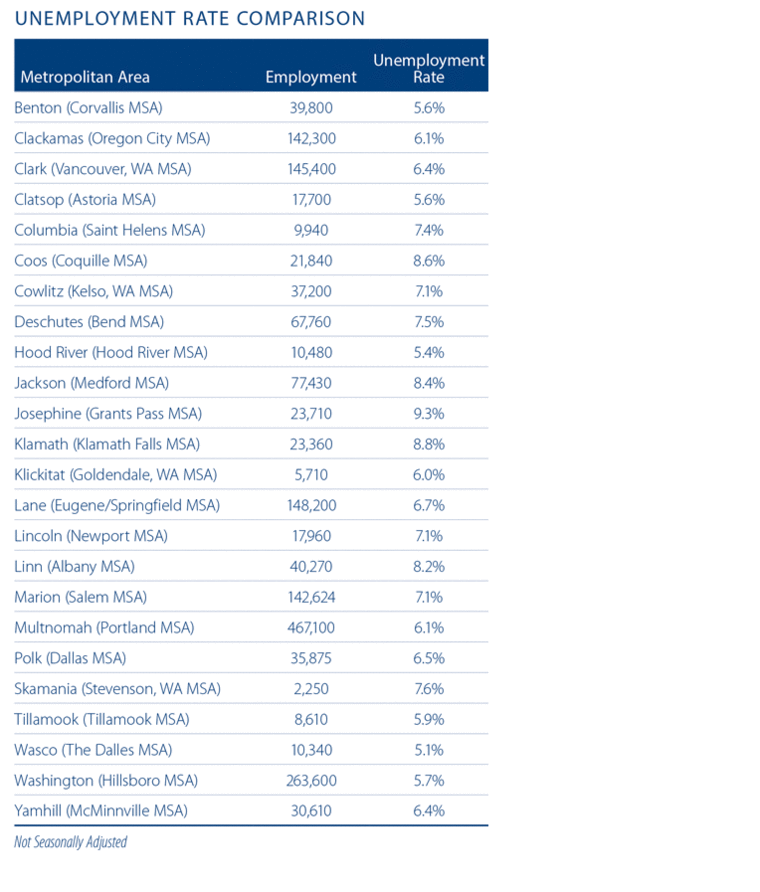
Regional Real Estate
Inventory constraints appear to be a major factor in the marketplace right now, with over half of the counties in this report showing a reduction in closed sales when compared to the first half of 2013.
For the most part the declines were rather modest, but it is not the direction that I was looking for. In my estimation, either the anticipated spring “bounce” did not appear or, as is more likely the case, sales in the first quarter were particularly slow, which is reflected in the decline in home sales for the first half of this year. I am not going to jump to judgment quite yet, but this is something that I will be keeping my eye on.
When compared to the first half of 2013, sales rose in eight counties with Clatsop and Cowlitz Counties up by an impressive 19.4 and 19.2 percent, respectively. The most substantial declines were seen in Columbia County where sales dropped by 13.3 percent. Other markets where sales dropped quite precipitously were Benton and Wasco Counties.
What is clear is that, while sales are getting harder to come by, prices are still moving higher with the average sale price growing from $275,100 to $291,200—an increase of 5.8 percent.
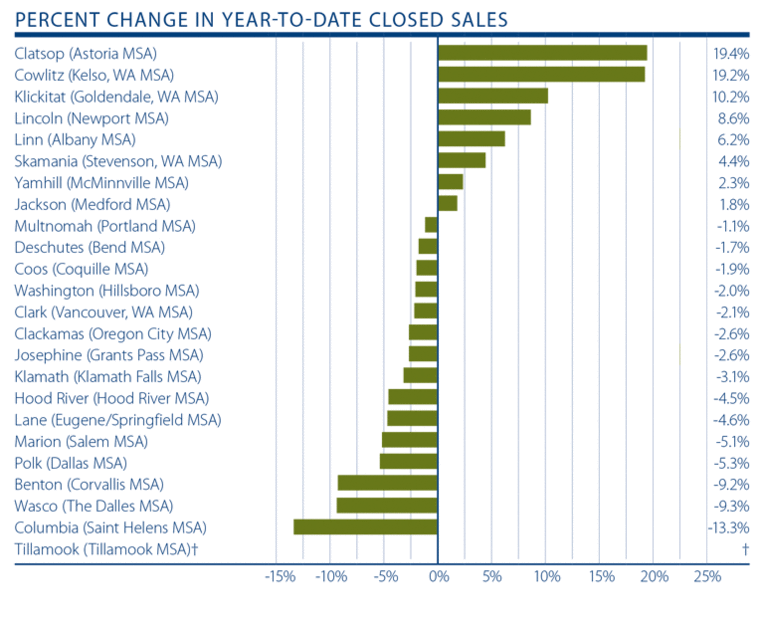

Looking at individual counties, a vast majority saw sale prices which were higher than those seen a year ago. The most impressive gains were seen in Klamath (+19.3%), Klickitat (+16.5%), and Columbia (+13.5%) Counties. A majority of counties saw prices rise by single digits, which is still respectable given inventory constraints.
There were three counties where prices fell, with Skamania County seeing the greatest drop in value versus a year ago (-24.3%). We attribute this to the fact that it is a very small market with less than 25 home sales on average every quarter. The two other markets where prices dropped very slightly were Lincoln (-2.3%), and Hood River (-1.0%) Counties.
Looking back a bit further, all but two counties in the region saw home prices exceed those shown in the second quarter of 2012. Additionally, 15 of 23 counties surveyed saw prices in the second quarter exceed those seen in the second quarter of 2009.
In all, the market is plodding along relatively well but, as is always the case, some areas are doing better than others. The lack of inventory is a concern and, purely because of this, I am maintaining a “C+” grade for now.
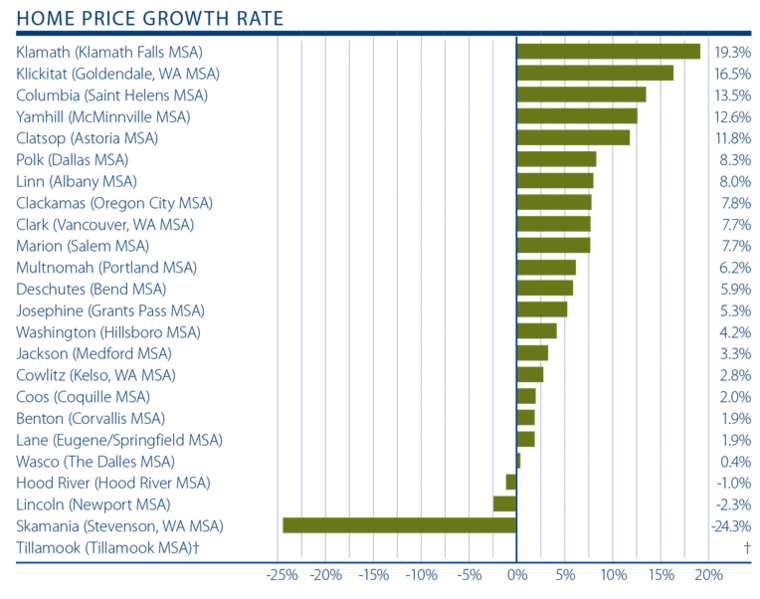

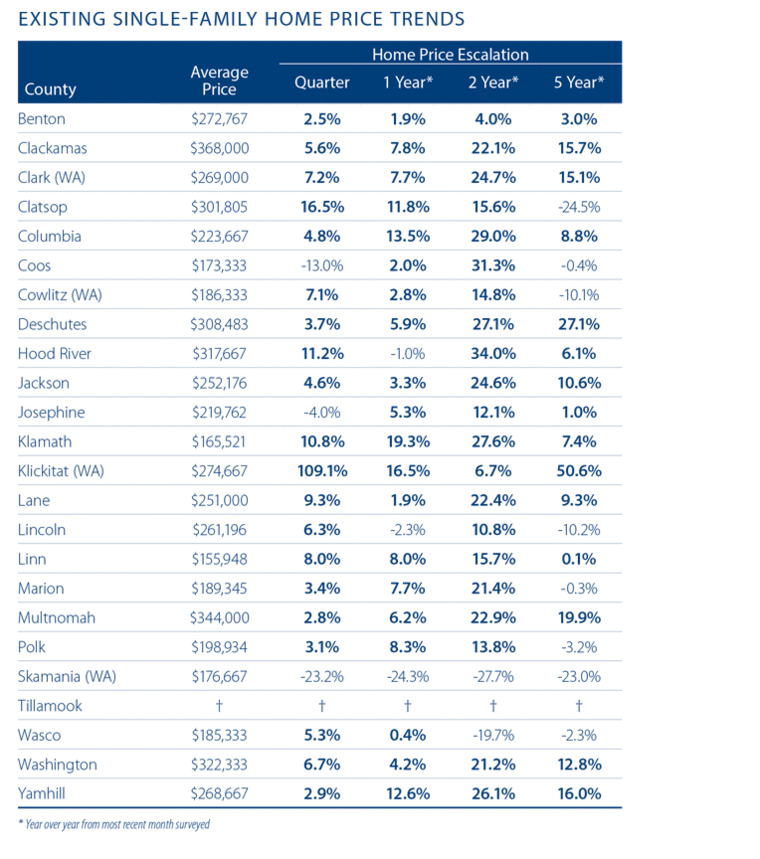
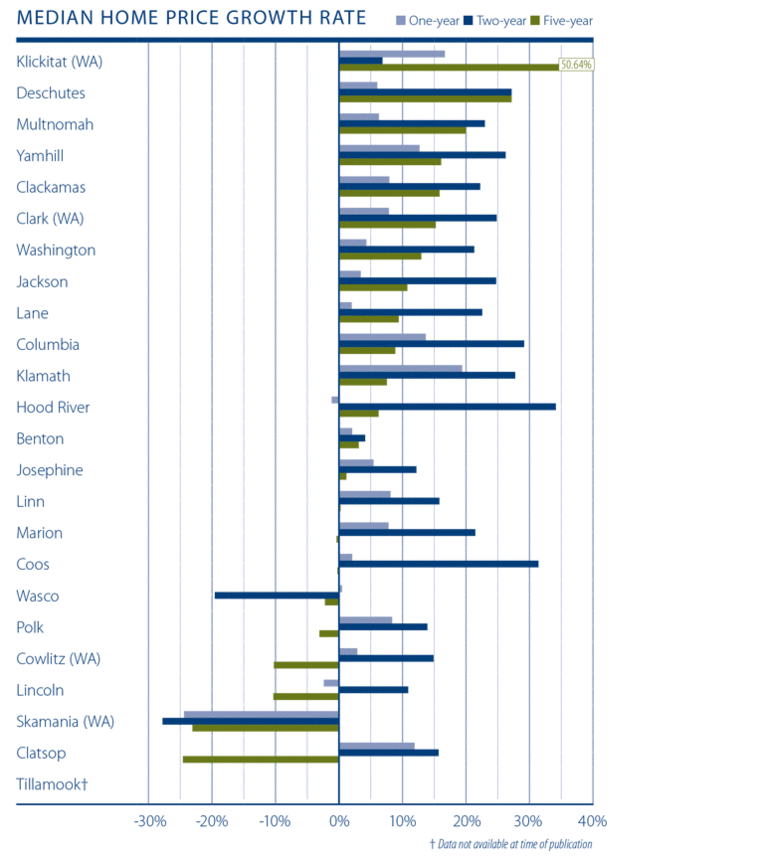
Conclusions
The unemployment rate in Oregon continues to trend lower but remains well above its pre-recession level; however, long-term unemployment (people who were unemployed for more than six-months) dropped to 40,700—the lowest number since 2008.
The markets covered by this report are seeing their labor forces grow, which is encouraging. More people are either looking for work or have obtained positions. I think that the temporary slowdown that was seen in June is just a blip and that the market will return to positive employment growth as we move through the rest of the summer.
The recovery in the housing markets in the region is certainly uneven. Price growth is at levels that I had expected, but the slowdown in home sales is not what I wanted to see. Interest rates remain at very low levels, but buyers continue to be frustrated by the lack of choice in the market.
I mentioned in my last report that I was hopeful that the region would start adding to its supply of homes for sale, but that has not yet happened. There is still time, but with the pre-school-year slowdown, the third quarter might not meet expectations in terms of inventory or sales. That said, it is clear that the market wants to grow. The question, given the clear supply constraints that exist, is can it? For now, that remains to be seen.
About Matthew Gardner
 Mr. Gardner is a land use economist and principal with Gardner Economics and is considered by many to be one of the foremost real estate analysts in the Pacific Northwest.
Mr. Gardner is a land use economist and principal with Gardner Economics and is considered by many to be one of the foremost real estate analysts in the Pacific Northwest.
In addition to managing his consulting practice, Mr. Gardner chairs the Board of Trustees at the Washington Center for Real Estate Research at the University of Washington; sits on the Urban Land Institutes Technical Assistance Panel; is an Advisory Board Member for the Runstad Center for Real Estate Studies at the University of Washington; and is the Editor of the Washington State University’s Central Puget Sound Real Estate Research Report.
He is also the retained economist for the Master Builders Association of King & Snohomish Counties. He has twenty-five years of professional experience in the U.K. and U.S.
He has appeared on CNN, NBC and NPR news services to discuss real estate issues, and is regularly cited in the Wall Street Journal and all local media.
 Facebook
Facebook
 X
X
 Pinterest
Pinterest
 Copy Link
Copy Link
